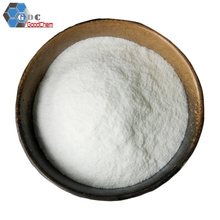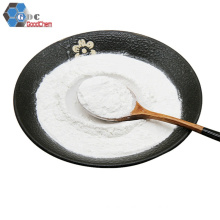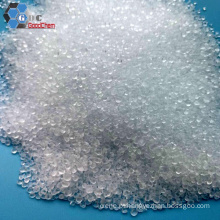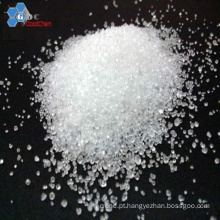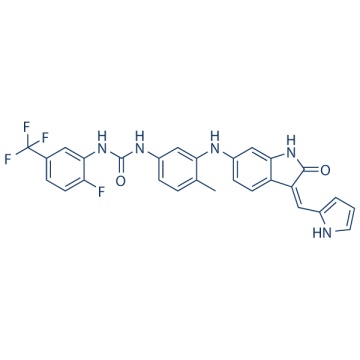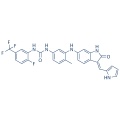GNF-5837 1033769-28-6
Descrição do produto
.cp_wz table {border-top: 1px solid #ccc; border-left: 1px solid #ccc; } .cp_wz table td {border-right: 1px solid #ccc; borda inferior: 1px sólido #ccc; preenchimento: 5px 0px 0px 5px;} .cp_wz tabela th {border-right: 1px solid #ccc; border-bottom: 1px solid #ccc; preenchimento: 5px 0px 0px 5px;} \ n Peso molecular: 535,49 GNF-5837 é um inibidor pan-TRK seletivo e biodisponível oralmente para TrkA e TrkB com IC50 de 8 nM e 12 nM, respectivamente. \ n Atividade biológica
Ensaio de cinase de protocolo (apenas para referência): [1]
Ensaio de células: [1]
Estudo Animal: [1]
Conversão de diferentes modelos de animais com base em BSA (valor com base em dados das diretrizes preliminares da FDA)
Por exemplo, para modificar a dose de resveratrol usada para um camundongo (22,4 mg / kg) para uma dose baseada na BSA para um rato, multiplique 22,4 mg / kg pelo fator Km para um camundongo e, em seguida, divida pelo fator Km para um rato. Este cálculo resulta em uma dose equivalente de rato para o resveratrol de 11,2 mg / kg.
Informação Química
| Description | GNF-5837 is a selective, and orally bioavailable pan-TRK inhibitor for TrkA, and TrkB with IC50 of 8 nM, and 12 nM, respectively. | |||||
|---|---|---|---|---|---|---|
| Targets | TrkC [1] | TrkB [1] | TrkA [1] | PDGFRβ [1] | Kit [1] |
   View More |
| IC50 | 7 nM | 9 nM | 11 nM | 0.87 μM | 0.91 μM | |
| In vitro | In Ba/F3 cells overexpressing the constitutively active Tel-TRKC fusion, GNF-5837 shows potent anti-Trk activity and potent antiproliferation activity with IC50 of 0.042 μM. | |||||
| In vivo | In both male Balb/c mice and Sprague–Dawley rats, GNF-5837 has the low drug clearance, and moderate biovailability. In mice bearing Rie xenografts expressing TrkA and NGF, GNF-5837 (100 mg/kg/d p.o.) significantly inhibits tumor growth. | |||||
| Features |
|
|||||
| Inhibition of biochemical TrkA, TrkB and TrkC | TrkA and TrkC biochemical assays are carried out by HTRF method. The reaction mixtures contains 1 μM peptide substrate, 1 μM ATP, and either 1.8 nM TrkA or 34 nM TrkC in the reaction buffer (50mM HEPES pH 7.1, 10mM MgCl2, 2 mM MnCl2, 0.01% BSA, 2.5 mM DTT and 0.1 mM Na3VO4) at a final volume of 10 μL. All reactions are carried out at room temperature in white ProxiPlate™ 384-well Plus plates and are quenched with 5 μL of 0.2 M EDTA at 60 min. Five μL of the detection reagents (2.5 ng PT66K and 0.05 μg SAXL per well) are added, the plates are incubated at room temperature for 1 h and then read in EnVision reader. Compounds are diluted into assay mixture (final DMSO 0.5%), and IC50 values are determined by 12-point (from 50 to 0.000282 μΜ) inhibition curves in duplicate under the assay conditions. TrkB biochemical assay is carried out by caliper microfluidic method. The reaction mixtures contained 1 μM peptide substrate, 10 μM ATP, and 2 nM TrkB in a reaction buffer containing 100 mM HEPES, pH 7.5, 5 mM MgCl2, 0.01% Triton X-100, 0.1% BSA, 1 mM DTT, 10 μΜNa3VO4, and 10 μΜBeta-Glycerophosphate. The reactions are carried out at room temperature for 3 hrs, and the products are determined by Caliper EZ-reader. Compounds are diluted into assay mixture (final DMSO 1%), and IC50 values are determined by 12-point (from 50 to 0.000282 μΜ) inhibition curves in duplicate under the assay conditions. |
|---|
| Cell lines | Wt Ba/F3 cells and Ba/F3 cells transformed with constitutively expressed luciferase reporter and BCR-ABL or Tel-KDR or other Tel fusion kinases |
|---|---|
| Concentrations | ~10 μΜ |
| Incubation Time | 48 hours |
| Method | Compounds are tested for their ability to inhibit the proliferation of wt Ba/F3 cells and Ba/F3 cells transformed with constitutively expressed luciferase reporter and BCR-ABL or Tel-KDR or other Tel fusion kinases. Parental Ba/F3 cells are maintained in media containing recombinant mouse IL3 and the kinase transformed Ba/F3 cells are maintained in media without IL-3. 7.5 nL of compounds are spotted to each well of 1536-well assay plates by Liquid handling System Echo 555 (Labcyte). 700 cells are then plated into each well of the assay plates in 7 μL culture media per well and compounds are tested at 0.17 nM to 10 uM in 3-fold serial dilutions. The cells were then incubated for 48 hours at 37 °C. 3 μL of Bright-Glo® is added to each well and the plates are read using ViewLux. |
| Animal Models | Mice bearing Rie xenografts expressing TrkA and NGF. |
|---|---|
| Formulation | 75% polyethylene glycol 300 (PEG300) and 25% of dextrose (5 mg/ml) |
| Dosages | 100 mg/kg/d |
| Administration | p.o. |
| Species | Baboon | Dog | Monkey | Rabbit | Guinea pig | Rat | Hamster | Mouse |
| Weight (kg) | 12 | 10 | 3 | 1.8 | 0.4 | 0.15 | 0.08 | 0.02 |
| Body Surface Area (m2) | 0.6 | 0.5 | 0.24 | 0.15 | 0.05 | 0.025 | 0.02 | 0.007 |
| Km factor | 20 | 20 | 12 | 12 | 8 | 6 | 5 | 3 |
| Animal A (mg/kg) = Animal B (mg/kg) multiplied by | Animal B Km |
| Animal A Km |
| Rat dose (mg/kg) = mouse dose (22.4 mg/kg) × | mouse Km(3) | = 11.2 mg/kg |
| rat Km(6) |
| Molecular Weight (MW) | 535.49 |
|---|---|
| Formula |
C28H21F4N5O2 |
| CAS No. | 1033769-28-6 |
| Storage | 3 years -20℃Powder |
|---|---|
| 6 months-80℃in solvent (DMSO, water, etc.) | |
| Synonyms | N/A |
| Solubility (25°C) * | In vitro | DMSO | 100 mg/mL (186.74 mM) |
|---|---|---|---|
| Water | <1 mg/mL ( | ||
| Ethanol | 9 mg/mL heating (16.8 mM) | ||
|
* <1 mg/ml means slightly soluble or insoluble. * Please note that Selleck tests the solubility of all compounds in-house, and the actual solubility may differ slightly from published values. This is normal and is due to slight batch-to-batch variations. |
|||
| Chemical Name | N-[3-[[2,3-dihydro-2-oxo-3-(1H-pyrrol-2-ylmethylene)-1H-indol-6-yl]amino]-4-methylphenyl]-N'-[2-fluoro-5-(trifluoromethyl)phenyl]-urea |
|---|
Grupo de Produto : Proteína Tirosina Quinase > Inibidor do receptor Trk
outros produtos
produtos quentes
Astragalosídeo AClortetraciclina HCl 64-72-2Paclitaxel 33069-62-4Acetato de dexametasona 1177-87-3Dinaciclib (SCH727965) 779353-01-4CHIR-124 405168-58-3Ro3280 1062243-51-9TAME 901-47-3CCG-1423 285986-88-110058-F4 403811-55-2Dabigatran (BIBR 953) 211914-51-1H 89 2HCl 130964-39-5T0901317 293754-55-9Aprepitant 170729-80-3Turofexorato isopropil (XL335) 629664-81-9BMS-378806 357263-13-9
